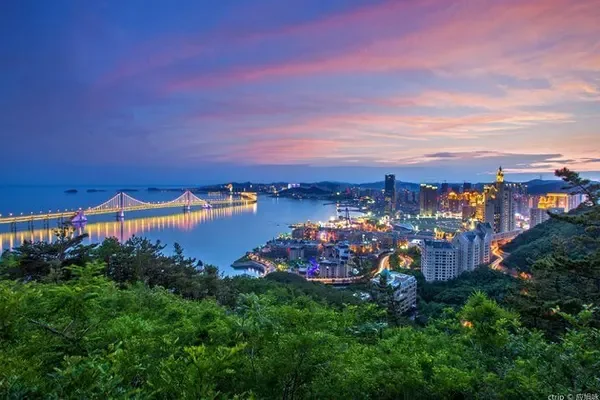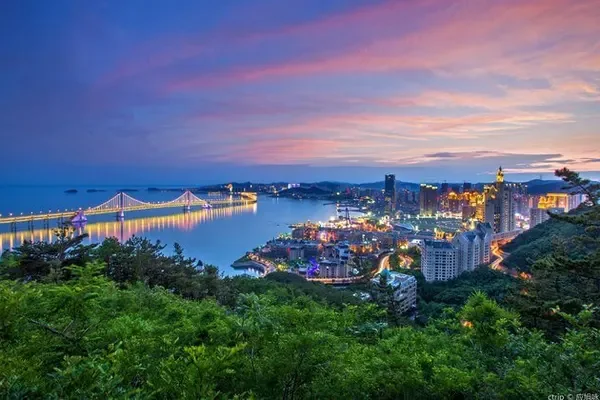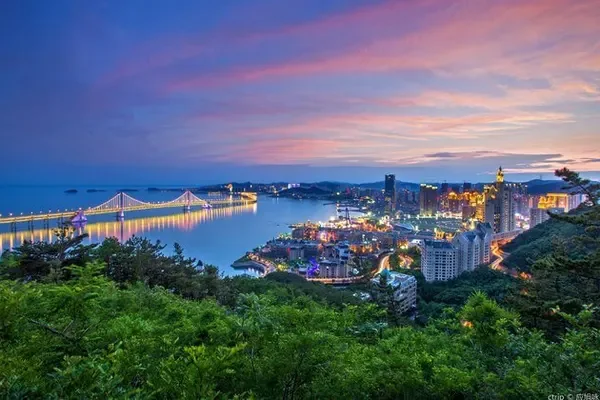
On the first day of the Qamdo self-driving tour, we originally wanted to live in Jitang Town, Chaya County. Later, due to the construction of the Sichuan-Tibet Railway, it was difficult to find a house in Chaya, Mangkang, Gongjue and other places. Although we had to change the itinerary , but I am still sincerely happy for the people along the way. After all, there is a saying in China since ancient times that when the train rings, there will be ten thousand cars of gold. Tourists who want to come here are great benefits.


Because we couldn’t book a room in Jitang and Chaya, we went directly back to Qamdo City for accommodation on the first night. The next day’s itinerary was still filming in Chaya County. In the morning, we set off from Qamdo to Chaya County. Xiangdui Ancient Town, but before the ancient town arrived, we have already been attracted by the beautiful scenery along the way.


Autumn scenery and terraced fields in Dochi Village
After we came to Chaya County along National Highway 214 and National Highway 349, we turned to Provincial Highway 203 (that is, the Chamang Highway from Chaya to Mangkang) to Xiangdui Ancient Town. Attracted by the autumn scenery, I stopped the car and took a group of photos. You must know that it is winter. In people’s impression, the winter in Tibet should be a bleak under the snow. To our surprise, Here we saw a golden colorful forest. When we raised the drone, we found that this is the place where two rivers meet, and there are picturesque terraced fields beside the river valley.


Zangbaka Bend and Mountain Lake
After a brief stay in Dochi Village, we continued along the Chamang Highway. When we reached a place on the map called Zangbaka, the uphill curve attracted us to stop and take aerial photos again. Although the uphill curve here is more It is not on the 72 turns of the Nu River, but it is still very beautiful from the air, especially when we raised the drone, we found that there are two small unnamed lakes on the top of the snow-capped mountains, one yellow and one blue. We were surprised and pleasantly surprised.


Xiangdui Ancient Town
Because we walked and took pictures along the way, after more than two hours of driving, we finally arrived at the famous Xiangdui Ancient Town at noon. This ancient town is divided into old town and new town. The new town is located in the valley plain area. They are all relatively new; while the old town is located on the mountain, and the ancient Tibetan-style dwellings are scattered among the mountains.


The new town is beautiful, but it is not our goal. Although the old town is slightly vicissitudes, it is thicker. Among the layers of Tibetan buildings, the most conspicuous one is the Xiangdui Temple, which has been passed down for thousands of years. Like Xiangdui Ancient Town, ancient temples are divided into old temples and new temples. The new temples are resplendent and magnificent, while the old temples have long been in ruins.


For this ruin, my friends said that it looks like the Colosseum in ancient Rome, but I think it looks a bit like Machu Picchu. It is located high in the snow-capped mountains, and the purple-red frame is still there. But without losing its majesty and variety, it is rigorous and magnificent. From a distance, through the long and narrow square window, we can see the thin clouds like cicada wings in the blue sky. Behind the ruins, there are still ruins on a slightly higher place, patchwork, integrated, heroic and desolate.


According to Lao Gao, a friend who has been here many times, the most spectacular among the ruins is the former Xiangkang Hall. As for its history, although there are not many documents and materials, and there are different opinions, generally speaking, it has been around for nearly a thousand years. The first enshrined in the Jian Hall is the Self-Growing Maitreya Buddha, which grew naturally from a stone left by Princess Wencheng when she entered Tibet. It sounds quite magical.


Hundreds of years have passed, although this place has become a ruin, we can still read its former glory from Zhongpin, and its thickness after years of baptism. Interestingly, the current Xiangkang Hall has been occupied by a large group of pigeons for happiness Homeland, seeing us coming, they keep flying around, I don't know if they are protesting or welcoming.


Chamang Highway Sunset
Reluctantly coming out of Xiangdui Ancient Town, it was already evening. On our way to the hotel, the beautiful Changdu once again brought us a surprise. On a section of the Chamang Highway with unknown place names, we saw the setting sun. I quickly parked the car and took a group of beautiful photos that exploded in the circle of friends, which once again verified the saying that "the most beautiful scenery is on the road".

Bathed in the golden glow of the setting sun, we arrived at the thousand-year-old salt field in Mangkang that night. It was the end of the second day’s trip, and we also bid farewell to Chaya. In the next article, we will share with you the beautiful scenery and anecdotes of Mankang in the future. Please look forward to it.


